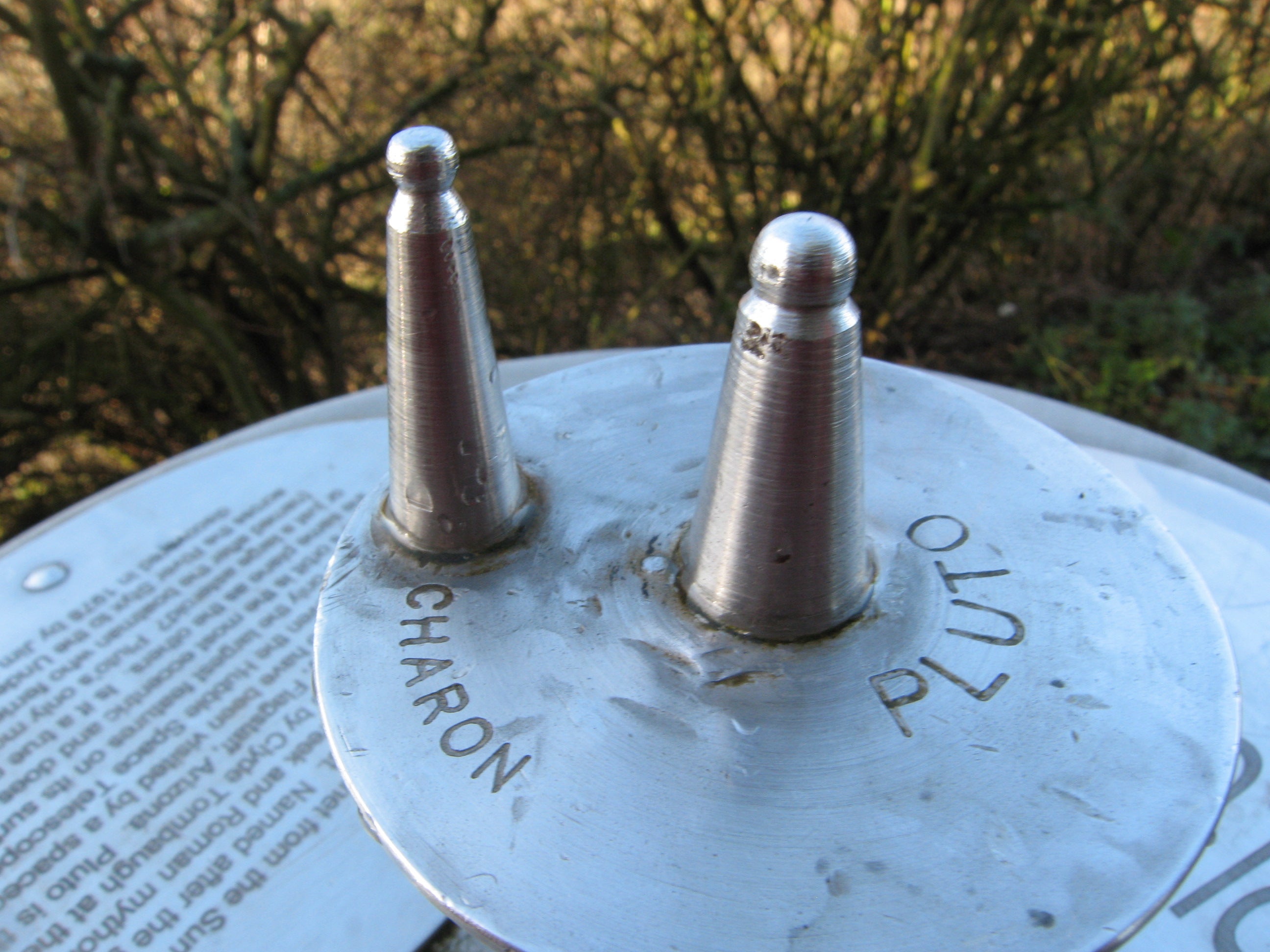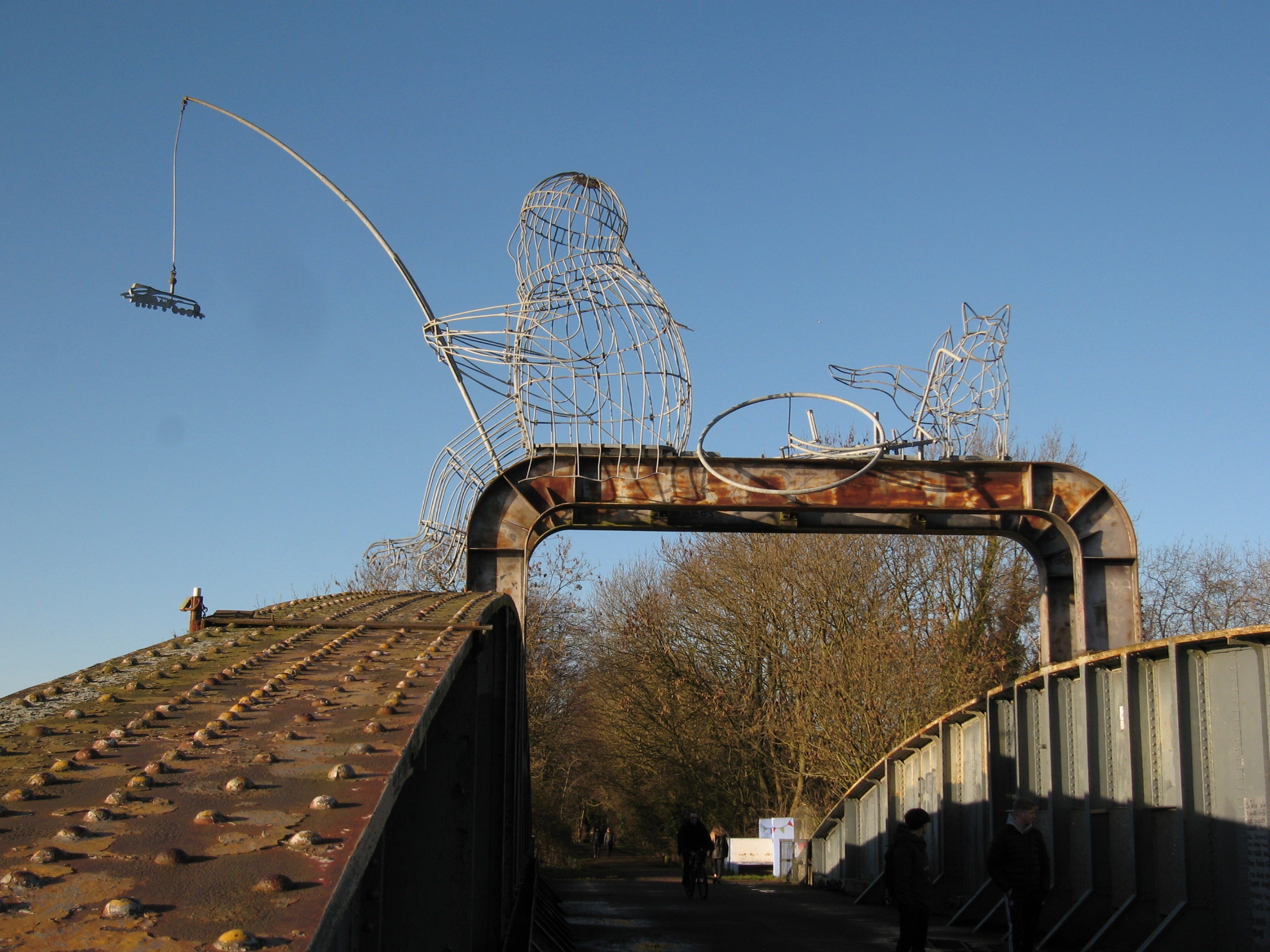Solar System Cycleway: The ultimate lockdown bike ride into outer space
York’s galactic trail provides more than mere exercise, finds Paul Kirkwood

How can you home school, exercise and go on the longest lockdown journey imaginable all at the same time? The solar system cycle way in York, one of my favourite routes in the north of England, might just be the answer.
Scale models of planets set at scaled down intervals provide landmarks on an off-road cycle track. The ride follows the track bed of the East Coast Mainline before it was re-routed further west to make way for the Selby coalfield in the 1970s. Sustrans adopted the old route and, by 1987, four years after its closure, turned it into the first section of what’s become the National Cycle Network.
Walking or cycling along the track provides a gentle, novel and educational family micro-adventure. I first did the ride with my kids 11 years ago and repeated it with my cub scout pack. Cycling the route recently I was reminded of the number of interesting spots to pause: ideal for dealing with short attention spans and tiring young legs. Not much had changed other than the addition of signs to socially distance – difficult to achieve as the path is only two metres wide. It’s strange to think about the implications of the rail engineers’ choice of gauge 150 years on.
The first thing that strikes me about the planets is their respective sizes. My only knowledge of them before my original mission was based on a poster in my brother’s bedroom back in the Apollo age, showing the planets at roughly the same size. Heading up the cycle way and suspended among the trees, the sun is a giant ball, the height of a room and weighing 14 tonnes. Jupiter is a volleyball, Neptune is a cricket ball and Pluto is a mere pea.
After the sun, each planet model and its moons – all made from stainless steel – are displayed beside the track on top of a metal plinth with information about them etched into the base. You will return from your exploration brimming with fascinating facts to relieve the ennui of lockdown conversations at the kitchen table.

Distances between planets on the ride – signed in terms of kilometres in space as well as the scaled-down cycle way equivalent – are equally enlightening. Mercury and Venus are just metres from the sun. It’s only a little further before you reach Earth and Mars, but soon after Jupiter the stellar staging posts become less frequent. The journey from Saturn to Uranus (guaranteed to raise a snigger both in and out of class) is about 2.5km, and it’s the same distance again out to Neptune.
By now on my ride, pushchairs, cyclists and walkers were few and far between. A lone jogger paced by, the low, glaring winter sun beaming through her hair as it flicked from side to side. Pluto, the most distant planet, is located on a spur from the cycle track, hidden within trees up its own little slope. Just beyond was a new addition to the trail, a one-third scale model of the Voyager 1 space probe easily mistaken for a TV satellite dish. I found a model of the Cassini-Huygens spacecraft near Saturn, too. The length of the route each way is 10km and it’s all flat, traffic-free – other than a short section through a housing estate – and well surfaced so you won’t get muddy whatever the weather.
Heading up the cycle way and suspended among the trees, the sun is a giant ball, the height of a room and weighing 14 tonnes
Astrophysics is just part of the solar cycle way curriculum. For your art homework, contemplate a giant sculpture called The Fisher of Dreams perched precariously on a former rail bridge. Steel rods form an angler with a miniature Flying Scotsman dangling from his rod as bait, a dog and bicycle. English is covered off by poems about nature posted at two points along the route, one of them a wonderfully quirky self-service “trust hut” complete with primus stove for your brew on the site of a former station.
There’s a ping-pong table for PE too. Other panels and the website provide a history lesson about travel on the River Ouse, railways, coal mining and wildlife. Use one of the hides to spot barn owls, corn buntings and yellow wagtails. And for more biology, pause at the new community orchard near the sun and explore Askham Bog nature reserve close to the start of the cycle way.

On my return I diverted briefly from the route to the pub for a drink with another cyclist – from our water bottles, seated outside and two tables apart, of course. I don’t think the landlord of the Blacksmiths Arms would be too bothered about our squatting. We were in the peaceful village of Naburn on the banks of the River Ouse. Last time I was here, dinghies bobbed beyond the sailing club slipway where children paddled like a scene from a 1960s postcard. Following heavy rain, the water was now halfway up the slipway. The village had a summery feel to it; the sunshine and a girl rollerskating by gave a frisson of the season we’re all so anticipating. I vowed to return again when an actual pint was possible.

The last and most timely lesson on this ride is philosophy. As I prepared for splashdown back at the Park & Ride, I pondered the significance of mankind’s – and Earth’s – current woes in the inconceivable vastness of space and time. A ride on the solar system cycle way had helped put things in perspective.
For full guide to the route see york.ac.uk/solar

Join our commenting forum
Join thought-provoking conversations, follow other Independent readers and see their replies
Comments